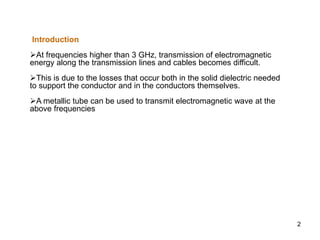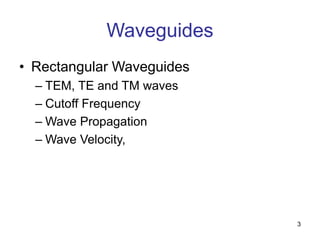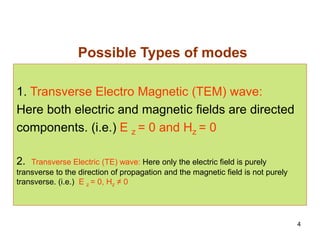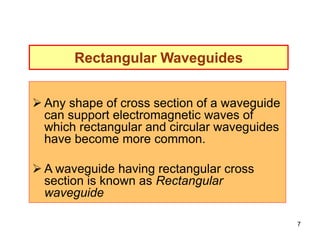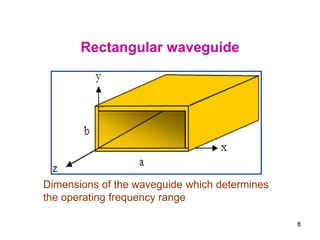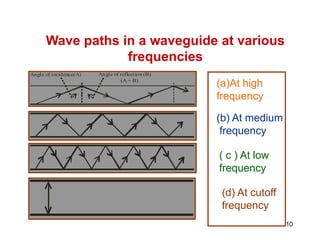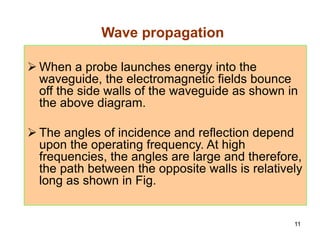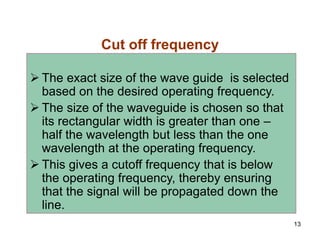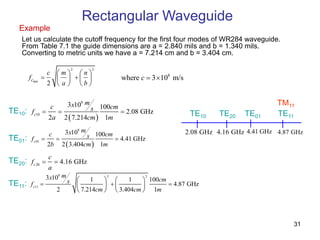A waveguide is a structure that guides electromagnetic waves along its length. Rectangular waveguides consist of a hollow metal tube with a rectangular cross-section. Circular waveguides use a cylindrical cross-section. Waveguides can support transverse electric (TE) and transverse magnetic (TM) modes of propagation above a cutoff frequency that depends on the waveguide dimensions. Common applications include microwave communications, radar installations, and feeding antenna horns and dishes.

